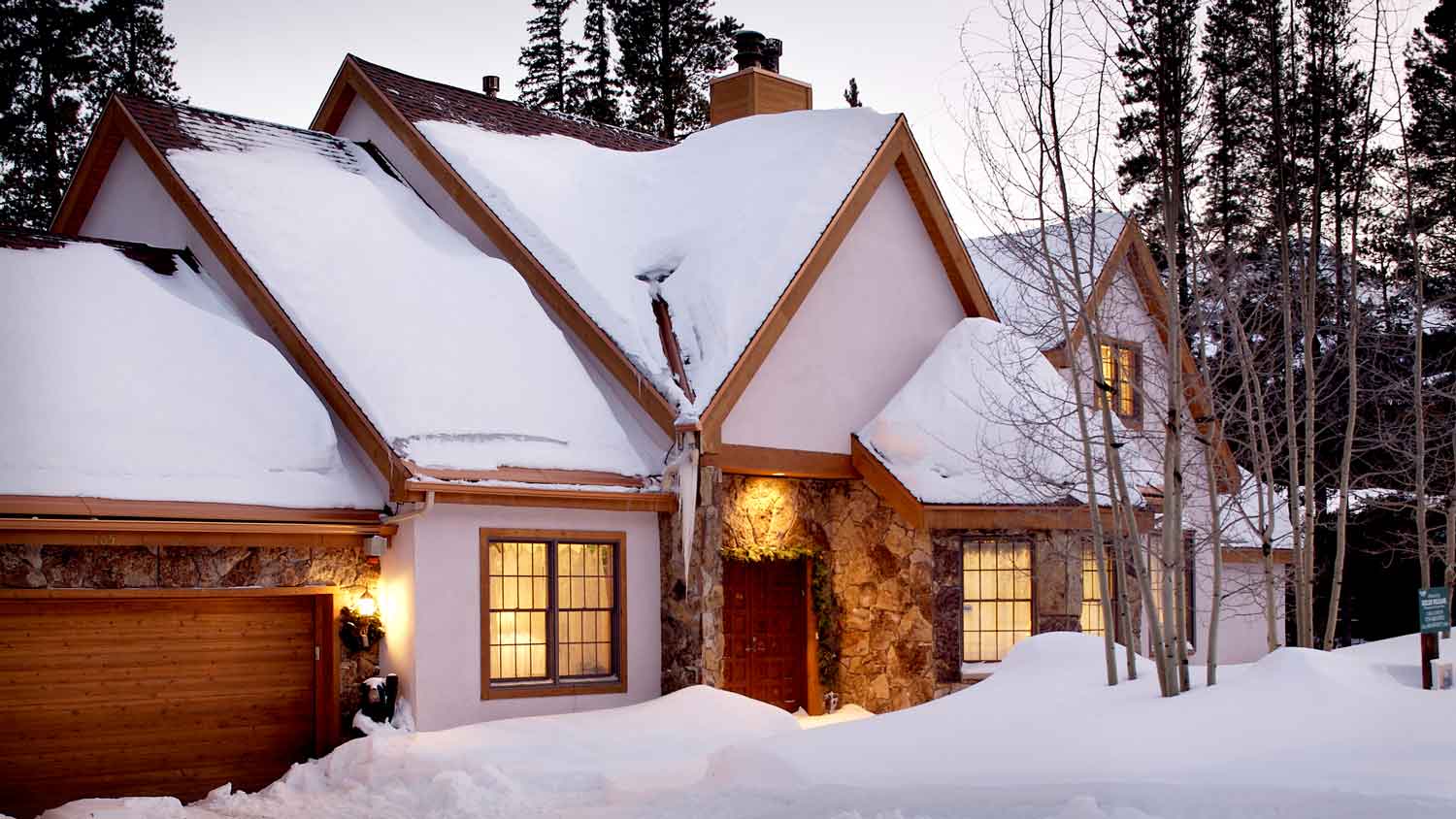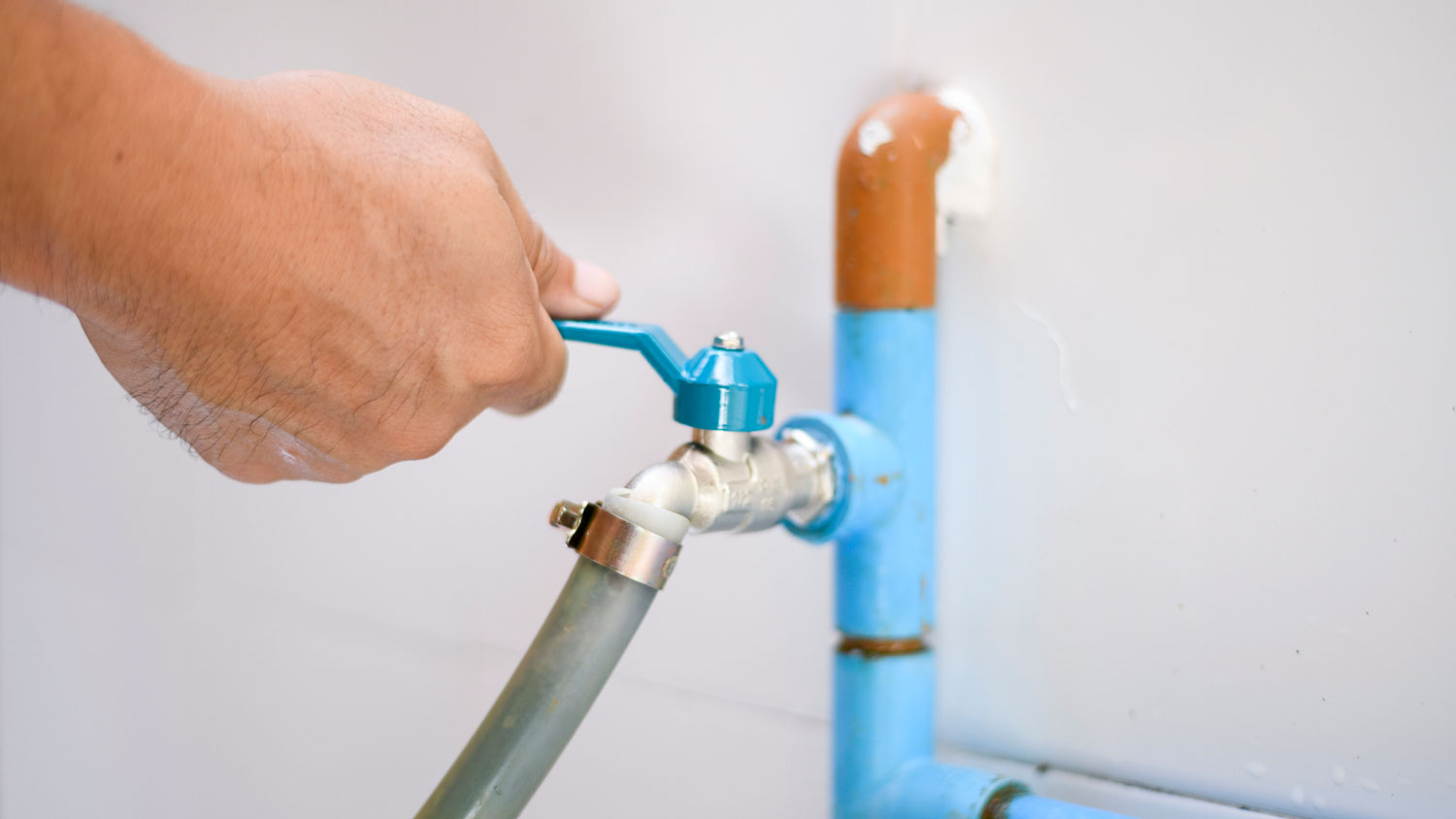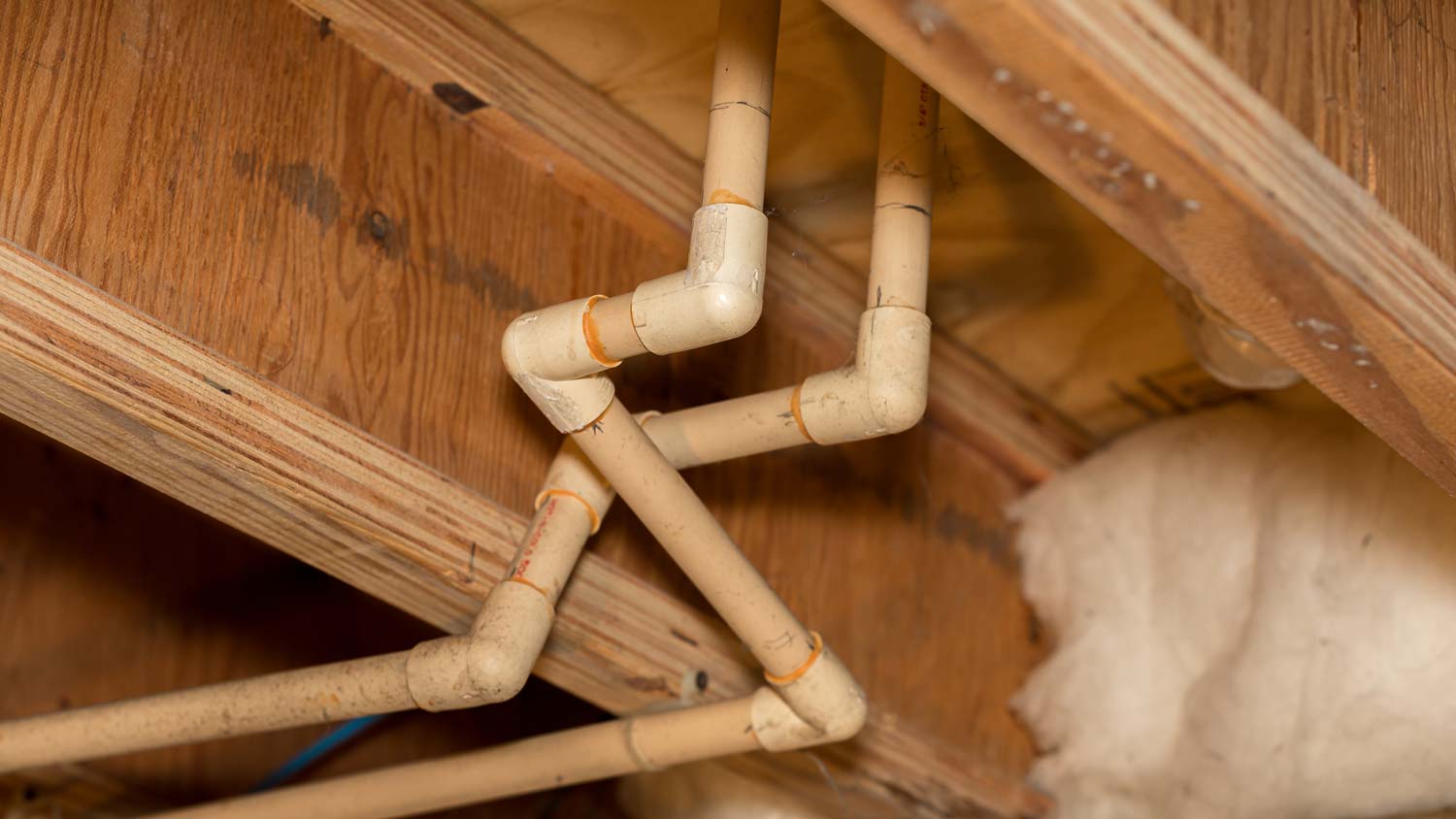Why Does My House Have Low Water Pressure in Cold Weather?
Don’t let winter weather get your water pressure down


Water pressure drops in cold weather because of frozen pipes or high demand.
Frozen pipes can burst, causing costly water damage.
Other causes of low water pressure include buildup or partially closed valves.
Check water valves and individual faucets to find the source of the problem.
You'll need to hire a plumber if you have frozen or burst pipes.
A frosty winter blizzard has come through town, and you can’t wait to warm up with a hot shower after shoveling the outdoor walkways. But low water pressure during cold weather might ruin your plans. Winter might be disrupting your plumbing if your showerhead provides trickling streams of warm water rather than its usual therapeutic peltings. Read on to troubleshoot the problem.
Why Water Pressure Drops in Cold Temperatures
You can experience lower water pressure any time of the year. While the culprits are usually hard water or leaks, winter can pose specific challenges to your home’s plumbing, especially when outdoor temperatures drop below freezing.
1. The Pipes Are Frozen
One of the most common reasons for low water pressure in cold weather is frozen pipes. As the temperatures outside drop, water in the plumbing pipes may freeze. As the water freezes, it expands and can prevent any unfrozen water from moving efficiently through the pipes. Not only that, but the frozen water could expand so much that it causes the pipes to burst.
Repairing burst pipes can cost$150 to $5,000, and you may also deal with costly water damage. So if you notice low water pressure in cold weather, it’s important to check for frozen pipes and hire a plumber to help before the issue worsens.
2. Demand Is Up

Imagine school closes for a snow day, and your boss gives you the thumbs up to work from home. The same is true for nearly every household on your block, and now there are a lot more families taking showers and washing dishes during the day than usual. With the increased demand, you may notice lower water pressure.
3. There’s a Buildup of Sediment
Sediment buildup, either in the pipes or in the aerators on faucets, can also disrupt your water pressure. Older pipes and pipe parts, like O-rings or valves, may be degrading in harsh weather, and the deposits could build up in the pipes. Hard water can also cause minerals to build up in the pipes and the faucet aerators, which blocks some water from going through, causing lower water pressure.
How to Tell if You Have Low Water Pressure
With water pressure, when you know, you know. As you go to wash your hands or take a shower, you may notice the water doesn’t feel as powerful as it usually does. When you go to fill a pot with water to cook pasta, the faucet takes longer than usual to fill the pot.
These are clear signs of low water pressure. To verify your concerns, you can also use a pressure gauge on an external hose nozzle to test the water pressure. You have low water pressure if the pressure is below 40 pound-force per square inch (PSI). (You should also be concerned if you notice readings that vary greatly from place to place in the house or high water pressure over 80 PSI.)
How to Troubleshoot Low Water Pressure in Cold Weather
If you notice low water pressure anywhere in your home, it could be due to several problems. You’ll need to check a few spots throughout the house, including various faucets and valves, to help narrow down the cause and proceed with the right solution.
1. Check the Water Pressure Throughout the Home
To better pinpoint and resolve the low water pressure, you’ll need to determine if you have low water pressure from one faucet or appliance or if it’s affecting your entire home. Check the water pressure from various faucets and showerheads to find out.
If your entire home’s water pressure is low, it could be a sign of a leak in a main outdoor water line that connects to the water meter or a water shut-off valve that isn’t completely open. Look for signs of an outdoor water leak and find the main water valve to make sure it’s open.
2. Inspect the Water Valves

You’ll need to check that the main water valve to your home is fully open since it can cause low water pressure if it’s only partially open. This will cause low water pressure throughout the home.
If you notice that the cold water pressure is fine, but the hot water pressure is low, inspect the shut-off valve on your hot water heater. Make sure the valve is completely open.
3. Test Individual Faucets
The water from the kitchen sink is flowing as usual, but you notice a significant decrease in water pressure from the bathroom faucet. This might indicate that the faucet aerator is rusted or has mineral buildup. You can remove and clean the aerator with vinegar or replace a faucet aerator for about $30.
4. Look for Frozen Pipes

To find frozen pipes in your home, start by looking at pipes in especially vulnerable areas, like basements, garages, or rooms with exterior walls. You may see visible frost and condensation on frozen pipes, or they may feel extremely cold to the touch.
Frozen pipes can burst, so here’s what to do when pipes freeze: Start opening cabinets and gently applying heat to the pipes with a hairdryer on a low heat setting. If the pipes are cracked, bulging, or have burst, make sure to shut off the main water valve immediately and call a plumber.
5. Consider Interruptions
Something is disrupting the service if there’s not just low but zero water coming out of your faucets. That could be a forgotten utility bill that went unpaid, local construction that shut off the water supply, or maintenance to the water supply in your area or building. You may need to call your water provider to check on any potential disruptions if you notice you don’t have water at all.
When to Call a Plumber
While you can wait out frozen pipes until they thaw, they are at risk of bursting if you don’t take action quickly. If you notice low water pressure, it’s best to hire a local plumber to inspect the pipes and look for signs of freezing, leaks, or buildup that could cause serious and costly damage.





- Gas Plumbers
- Plumbing Repairs
- Sump Pump Installation
- Wood & Pellet Stove Repair
- Shower Repair
- Wood Stove Services
- Emergency Plumbers
- Fire Sprinkler Contractors
- Perc Test Companies
- Toilet Repair & Installation
- Boiler Repair
- Sewer Line Repair
- Faucet Repair
- Main Drain Camera Companies
- Foundation Drain Installation
- French Drains
- Bathtub Replacement
- Subcontractors
- Storm Drain Contractors
- Affordable Plumbing
- Plumbing & Heating Companies
- Bathroom Repair Services
- Sink Installation
- Commercial Plumber
- Barndominium Builders
- Water Line Repair
- Faucet Installation
- Water Line Installation
- Leak Detection
- 8 Reasons There Is Low Water Pressure In Your Kitchen Faucet
- Low Water Pressure in Your House? 9 Possible Reasons Why and 6 Ways to Fix It
- 9 Tips to Help Increase the Water Pressure in Your House
- How To Increase the Water Pressure From Your Well
- How to Test Your Home’s Water Pressure at the Hose Bib (and What to Do if It’s Too Low or High)
- How To Get More Pressure From Your Well: Everything You Need To Know
- If Your Water Flow Is Weak, It May Be Time To Address a Water Volume Issue
- Can Cold Weather Cause Pipes to Leak? How to Fix and Prevent
- How to Find Frozen Pipes in Your Home
- No Water Coming Out of Your Faucets? Here’s Why and What to Do About It















